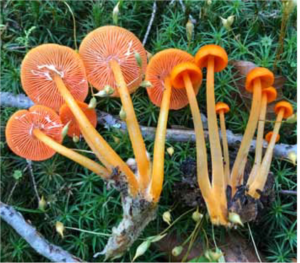Kingdom Fungi Interesting Facts
Fungi—some forms have existed millions of years!—originally were classified as plants. But they lack chlorophyll and other basic plant characteristics, so today, they reign over their own realm: Kingdom Fungi.
I’m eating what?
Your grocery store is stocked with fungi, from edible mushrooms to beer, wine and cheese that are fermented from yeast. The pharmacy also has items produced from Kingdom Fungi: the common antibiotics penicillin and tetracycline are manufactured from molds, as are cholesterol-fighting statins.
High-tech help:
Fungi enzymes are used with biotechnology and the making of textiles, paper and more.
The downside:
Parasitic fungi—mildew, rusts, scabs and cankers—are not as welcome. In humans, they cause athlete’s foot, ringworm and thrush. And for farmers, fungi cause crop diseases and monetary losses.
A broad family:
Mycology is the branch of biology that studies Kingdom Fungi, which are found in just about any habitat, though most live on land. Fungi’s kin range from single-cell, microscopic yeasts to complex, multi-cell mushrooms, molds, lichens and tree brackets.
Spores that Soar:
Mushrooms, perhaps the most well-known fungi, produce countless spores for sexual and asexual reproduction. Wind, rain and insects disperse the spores to help ensure survival.
Eco-eaters:
Fungi act as parasites or decomposers when breaking down and digesting organic matter. They later release nutrients back into the ecosystem, and history (not to mention biology) repeats itself.
Did you know?
No carbon dioxide for fungi. Like humans, they prefer oxygen! And the world’s deadliest fungus may be the death cup mushroom (Amanita phalloides), a poisonous resident of Europe. If you plan to go foraging for fungi, make sure to research different types to avoid picking something poisonous.
Where can I find natural growing Kingdom Fungi?
See fungi at Lewis Ginter Botanical Garden along the Woodland Walk and in shady areas. For more about other native plants and trees, visit lewisginter.org.
This article was originally published in Discover Richmond.
